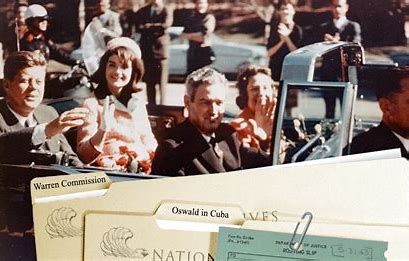The assassination of President John F. Kennedy on November 22, 1963, remains one of the most significant and controversial events in American history. Decades of speculation, conspiracy theories, and investigative efforts have surrounded the tragic event, fueling ongoing public interest and debate. Recently, the United States government released thousands of declassified pages related to the assassination, shedding new light on the circumstances, key figures, and potential motives behind the killing. This article explores the contents of the newly declassified documents, the historical context, and the implications for understanding one of the most scrutinized moments in modern American history.
Introduction
The assassination of President John F. Kennedy (JFK) on November 22, 1963, in Dallas, Texas, has captivated historians, political analysts, and the public for more than six decades. While the Warren Commission, established in 1964, concluded that Lee Harvey Oswald acted alone in the assassination, countless alternative theories have persisted, ranging from the involvement of the CIA, the KGB, and organized crime to internal political factions within the U.S. government.
Over the years, the U.S. government has periodically released documents related to the assassination, but many records remained classified due to national security concerns. In December 2022 and June 2023, the Biden administration authorized the release of thousands of pages of previously classified material, marking a significant step toward transparency. This article examines the key findings, potential revelations, and the broader historical impact of the newly disclosed information.
Historical Context
The assassination of JFK marked a turning point in American history, setting the stage for political upheaval, social unrest, and a deep mistrust of government institutions. The Warren Commission’s conclusion that Oswald acted alone was met with skepticism from the outset. A 1979 report by the House Select Committee on Assassinations (HSCA) determined that there was a “high probability” of conspiracy, further fueling suspicions that the full story had yet to be revealed.
The push for transparency gained momentum with the passage of the President John F. Kennedy Assassination Records Collection Act of 1992, which mandated the release of all related government documents by October 2017. However, successive administrations delayed the full release of records, citing national security concerns.
Lee Harvey Oswald’s plan to assassinate President John F. Kennedy remains partially speculative, but the evidence gathered by the Warren Commission and other investigative bodies provides a general outline of his likely intentions and actions leading up to the assassination.
Planning and Motivation
Oswald’s motive for killing President Kennedy has been widely debated, but several key factors are believed to have influenced his decision:
- Political Ideology – Oswald was a self-proclaimed Marxist who had defected to the Soviet Union in 1959, where he lived for nearly three years before returning to the United States. He was highly sympathetic to communist causes, particularly Cuban and Soviet interests.
- Resentment Toward the U.S. Government – Oswald expressed deep dissatisfaction with American capitalism and foreign policy. He was particularly hostile toward U.S. actions against Cuba, including the failed Bay of Pigs invasion in 1961 and CIA attempts to overthrow Fidel Castro.
- Desire for Recognition – Psychological profiles suggest Oswald harbored feelings of inadequacy and a desire to leave his mark on history. Killing the president would have been a way for him to assert power and significance.
Preparation and Execution
Oswald’s plan to assassinate President Kennedy appears to have taken shape in the weeks leading up to the assassination:
-
Employment at the Texas School Book Depository
- Oswald secured a job at the Texas School Book Depository in October 1963, just weeks before Kennedy’s scheduled motorcade through Dallas.
- The sixth floor of the building provided a clear line of sight to Dealey Plaza, where the motorcade route would pass.
-
Acquisition of the Rifle
- Oswald purchased a 6.5mm Carcano rifle under the alias “A. Hidell” in March 1963 via mail order.
- Ballistics evidence later confirmed that the rifle found at the scene matched the bullets recovered from President Kennedy’s body.
-
Oswald’s Movements Leading Up to the Assassination
- On the morning of November 22, 1963, Oswald brought a long paper-wrapped package to work, which he claimed contained curtain rods.
- Investigators concluded that the package likely contained the disassembled rifle.
-
Positioning and Shooting
- At approximately 12:30 PM, Oswald positioned himself at a window on the sixth floor of the Texas School Book Depository.
- He fired three shots at the presidential motorcade as it passed through Dealey Plaza:
- First Shot – Missed the motorcade (possibly due to a tree branch obstructing his line of sight).
- Second Shot – Struck President Kennedy in the upper back, exiting through his throat, and hitting Texas Governor John Connally.
- Third Shot – Hit Kennedy in the head, causing a fatal injury.
Escape and Capture
Following the shooting, Oswald quickly left the building using the back stairs:
-
Public Bus and Taxi Ride
- Oswald left the Texas School Book Depository and boarded a public bus but soon got off due to traffic.
- He then took a taxi to his boarding house, where he retrieved a handgun.
-
Shooting of Officer J.D. Tippit
- Approximately 45 minutes after the assassination, Oswald was stopped by Dallas police officer J.D. Tippit.
- Oswald shot and killed Tippit with a revolver before fleeing on foot.
-
Arrest at the Texas Theatre
- Oswald was captured at the Texas Theatre after attempting to evade authorities.
- He was charged with the assassination of President Kennedy and the murder of Officer Tippit.
Key Findings in the Declassified Documents
The recently released documents provide new insights into the following key areas:
1. Oswald’s Connections to the CIA and FBI
- The documents reveal that Oswald had been under surveillance by the CIA and the FBI prior to the assassination.
- A memo dated October 10, 1963, shows that the CIA was monitoring Oswald’s movements in Mexico City, where he allegedly met with Cuban and Soviet officials.
- New information suggests that both the CIA and FBI may have downplayed or concealed knowledge of Oswald’s activities in the months leading up to the assassination.
2. International Involvement and Cold War Tensions
- Several documents detail communications between Soviet and Cuban officials concerning Oswald.
- A KGB assessment concluded that Oswald was “unstable” and unlikely to have been acting on Soviet orders.
- Records indicate that Cuban intelligence had been aware of Oswald’s movements and may have had indirect contact with him.
3. Internal Government Disputes and Cover-Up Allegations
- Newly released CIA documents indicate that some agency officials sought to withhold information from the Warren Commission.
- A 1964 memorandum suggests that senior officials believed full disclosure of CIA operations related to Oswald could compromise national security.
- Notes from a 1975 meeting of the Rockefeller Commission reveal internal discussions about potential CIA involvement in a cover-up.
4. Lee Harvey Oswald’s Psychological Profile and Motivations
- Psychological assessments of Oswald, now available in full, indicate a pattern of mental instability and resentment toward U.S. government policies.
- Records of Oswald’s time in the Soviet Union, including interviews conducted with KGB officials, provide a deeper understanding of his ideological motivations.
Implications and Historical Significance
The release of these documents represents a significant step toward greater transparency and accountability regarding one of the most consequential events in American history. While the newly declassified material does not definitively resolve all questions surrounding the assassination, it strengthens the case that both the CIA and FBI were aware of Oswald’s potential threat and failed to act decisively.
The documents also underscore the complex geopolitical context of the Cold War, suggesting that international intelligence agencies were closely monitoring Oswald’s activities. The lingering question of whether elements within the U.S. government deliberately concealed key evidence remains a focal point for historians and researchers.
Challenges and Future Research
Despite the volume of newly released material, certain documents remain redacted or classified under the guise of national security. Advocacy groups and historians continue to push for the full release of all assassination-related documents, arguing that complete transparency is essential for historical accuracy and public trust.
Future research will likely focus on the following areas:
- Further analysis of Oswald’s time in Mexico City and his interactions with Soviet and Cuban operatives.
- Examination of internal CIA and FBI communications regarding Oswald in the months leading up to the assassination.
- Psychological and ideological profiling of Oswald’s motives and state of mind.
https://www.youtube.com/watch?v=lzYBOObnV7o
Conclusion
The recent release of thousands of declassified pages related to the JFK assassination represents a critical milestone in the ongoing quest for historical truth and justice. While the documents provide new insights into Oswald’s activities and government awareness, the full story remains elusive. The persistent gaps and contradictions in the official narrative ensure that the assassination of John F. Kennedy will continue to be a subject of inquiry and debate for generations to come.
References
- National Archives and Records Administration. (2022). JFK Assassination Records: 2022 Release. https://www.archives.gov/research/jfk
- House Select Committee on Assassinations. (1979). Final Report of the Select Committee on Assassinations. U.S. Government Printing Office.
- Warren Commission Report. (1964). Report of the President’s Commission on the Assassination of President John F. Kennedy. U.S. Government Printing Office.
- National Archives and Records Administration. (2023). JFK Assassination Records: 2023 Release. https://www.archives.gov/research/jfk
- Russo, G., & Molton, S. (2008). Brothers in Arms: The Kennedys, the Castros, and the Politics of Murder. Bloomsbury Publishing.

By: Donte Nelson


